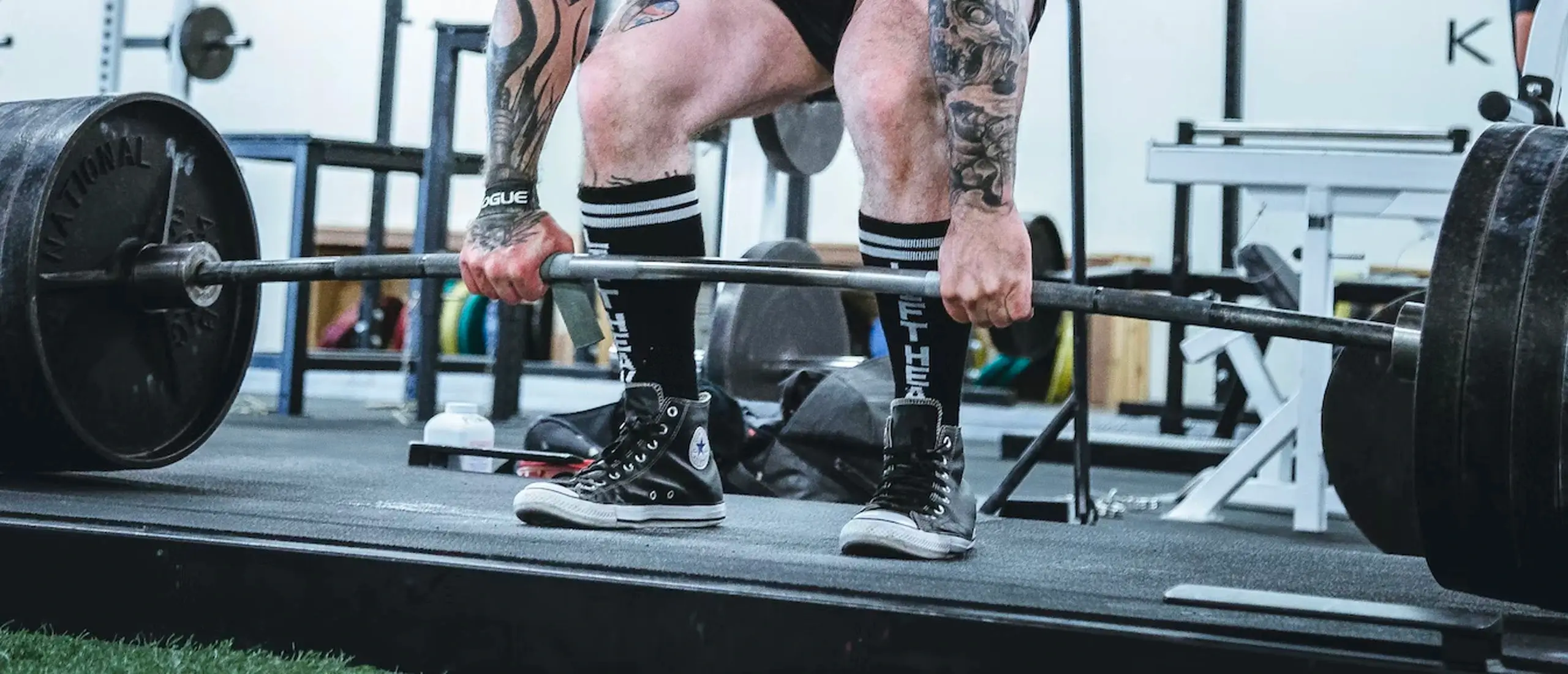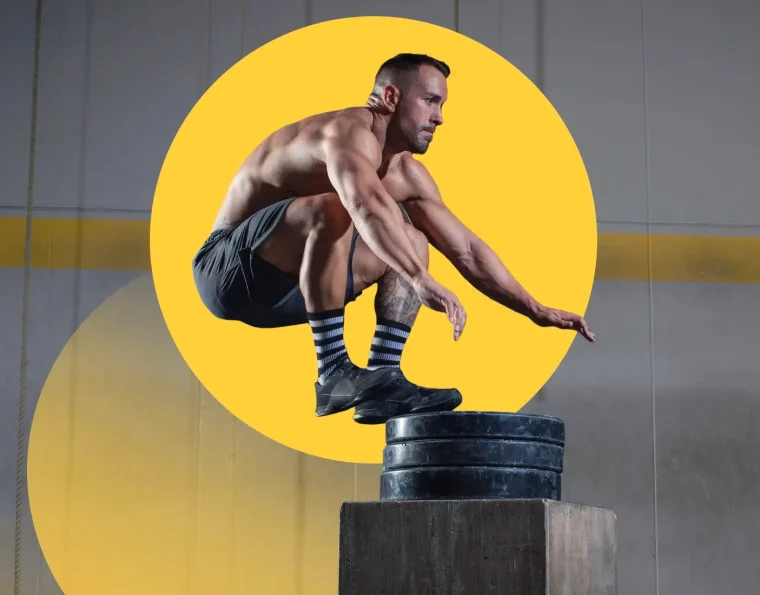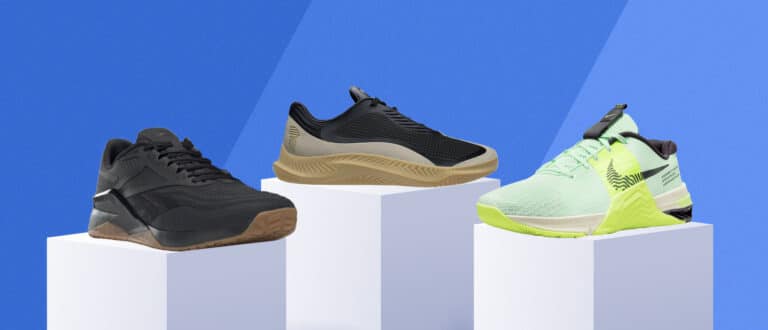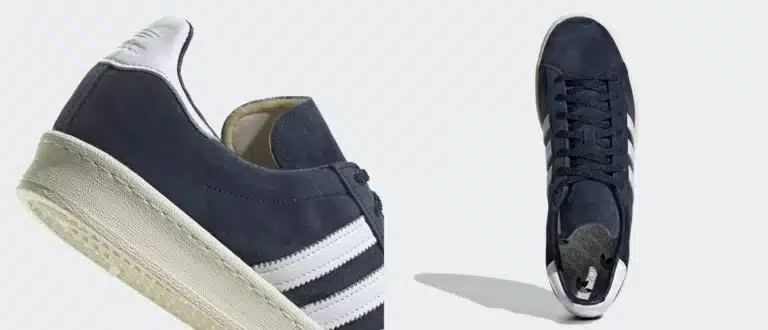
Are Converse All Stars the Holy Grail of Weightlifting Shoes?
Gym rats are to Chuck Taylors as peanut butter is to jelly. Try to separate the two and the claws will come out, especially come leg day.
Still, there’s a good deal of controversy around wearing the fan-favorite flat sneakers for lifting. Some claim flat shoes are the best—with Converse leading the pack—but others firmly believe gym shoes require a lifted heel for optimal position during lower body exercises like squats and deadlifts.
While the Reddit wars on this topic are guaranteed to rage on, you don’t need to waste your time. We talked to a fellowship-trained foot and ankle specialist, Sarah E. Haller DPM, FACFAS, and certified personal trainer and functional movement specialist Samantha Candler, NASM CPT, CES to settle the score.
What Makes Converse Great for Weightlifting?
They’re flat
“Most of what I like about Converse can be summed up by what they don’t have,” says Candler, “they don’t have much cushioning and they lack arch support.” Haller explains flatter, less-cushioned shoes allow equal weight distribution during strength training as opposed to a running shoe, or any shoe with a higher sole at the heel than the toe. “Those kinds of shoes are better for high impact activities—like HIIT or running—where ground reactive forces are moving from the foot to the leg.”
They enhance force transfer
“Shoes with thick cushioning act like sponges, absorbing force,” says Candler, “but in lifting, you want to transfer force directly into the ground to effectively move the weight.” For example, when you squat, you are pushing into the ground and the ground is providing an equal and opposite force back to you. The more cushioning, the less force transfer. “The soles of Converse are flat and relatively hard, so you can utilize ground reaction forces efficiently,” she adds.
Improve posture
If your feet are flat while lifting, you have better alignment through the ankle, knee, hip, and shoulders. Because of your neutral body position, “biomechanically, the converse sneaker allows for activation of the posterior chain and Achilles complex,” says Haller. The posterior chain is an umbrella term for the muscles in your backside including your hamstrings, glutes, and back. Activation of these muscles “is important for posture and core strength, and helps to prevent problems in the lower back,” she adds.
Activate more muscles
According to Haller, there are 38 intrinsic muscles in the foot. “Like any other muscles in our body, those in our feet need to be trained too,” Candler chimes in. “By wearing chucks you remove arch support, and force your stabilizing muscles into action.” She points out that training your feet to support themselves is incredibly valuable both in the gym and in everyday life.
SHOP CONVERSE
Disadvantages to Lifting in Converse
Narrow toe box
“The downside to Converse is the very narrow toebox, which can squish your toes into an unnatural and disadvantageous position,” says Candler. If they do, they’ll leave you defenseless against pronation (when the arch of the foot collapses in) which can hurt your squat form.
How to know if they’re too narrow or just right?
Take the insert out of the converse, and step on it with your bare foot. Spread your toes wide and grip the floor (just like you’d do during a squat). If your splayed toes are wider than the insert, you need a shoe with a wider toe box.
Lack arch support
The lack of arch support can be a pro or con depending on your foot. Some may thrive without arch support, while others might prefer or need more. If you fall in the latter camp, try adding an insert to your Converse for added structure. Haller recommends Power Step inserts, which were designed by a podiatrist.
Require full range of motion
The type of footwear you select should come down to your range of motion. Shoes with a lifted heel might not be ideal for posture, but they are good for those who lack ankle mobility to get deeper in their squat. Converse don’t limit your range of motion, they just don’t extend it. To Candler’s point, there’s a big benefit in progressing to lifting in a minimal shoe while working on your mobility over time, rather than using a lifted heel as a crutch—which only enables bad mobility.

Want exclusive content? Our digests do that.
The best science-backed, expert-driven health and lifestyle content delivered to your inbox, weekly.
How to Start Lifting In Converse
“If you’re used to more structured shoes, especially if you use orthotics, gradually spend more time in minimal footwear,” says Candler. “Too sudden of a transition can lead to injury, as the muscles, tendons, ligaments, and fascia in your feet need time to build up to higher demands.”
To slowly break them into your routine, Haller suggests going down in weight class. For example, if you usually squat 100 pounds, try 80, and see how your body responds. Continue listening to your body as you incrementally increase weight over multiple sessions.
If your feet get sore, it’s okay. Give the muscles in your feet time to recover and rebuild, and try again. If your arches have always been supported, gaining strength will take time. Just like any muscle in your body, your feet will need to build up to handling heavy loads.
Finally, remember there is no one shoe that is best for everyone. The right shoe for you will offer the comfort and control that you need. If you feel better in a shoe with more support, try structured weightlifting shoes, which range in support and heel drop.
Best Converse for Weightlifting
Want to lace up your Converse for your next leg day? Candler and Haller agree that if you stick to the classic low or high tops, you really can’t go wrong.











